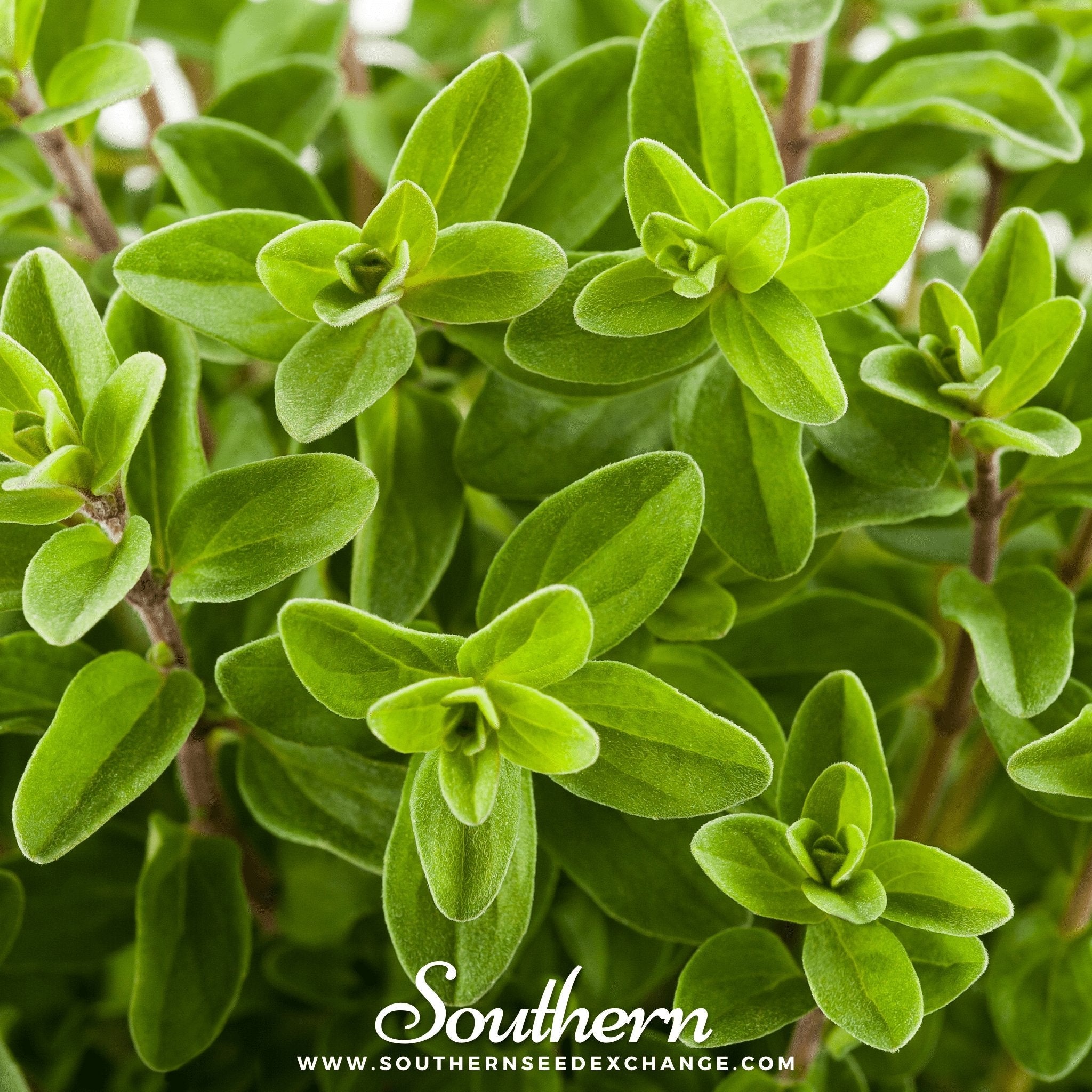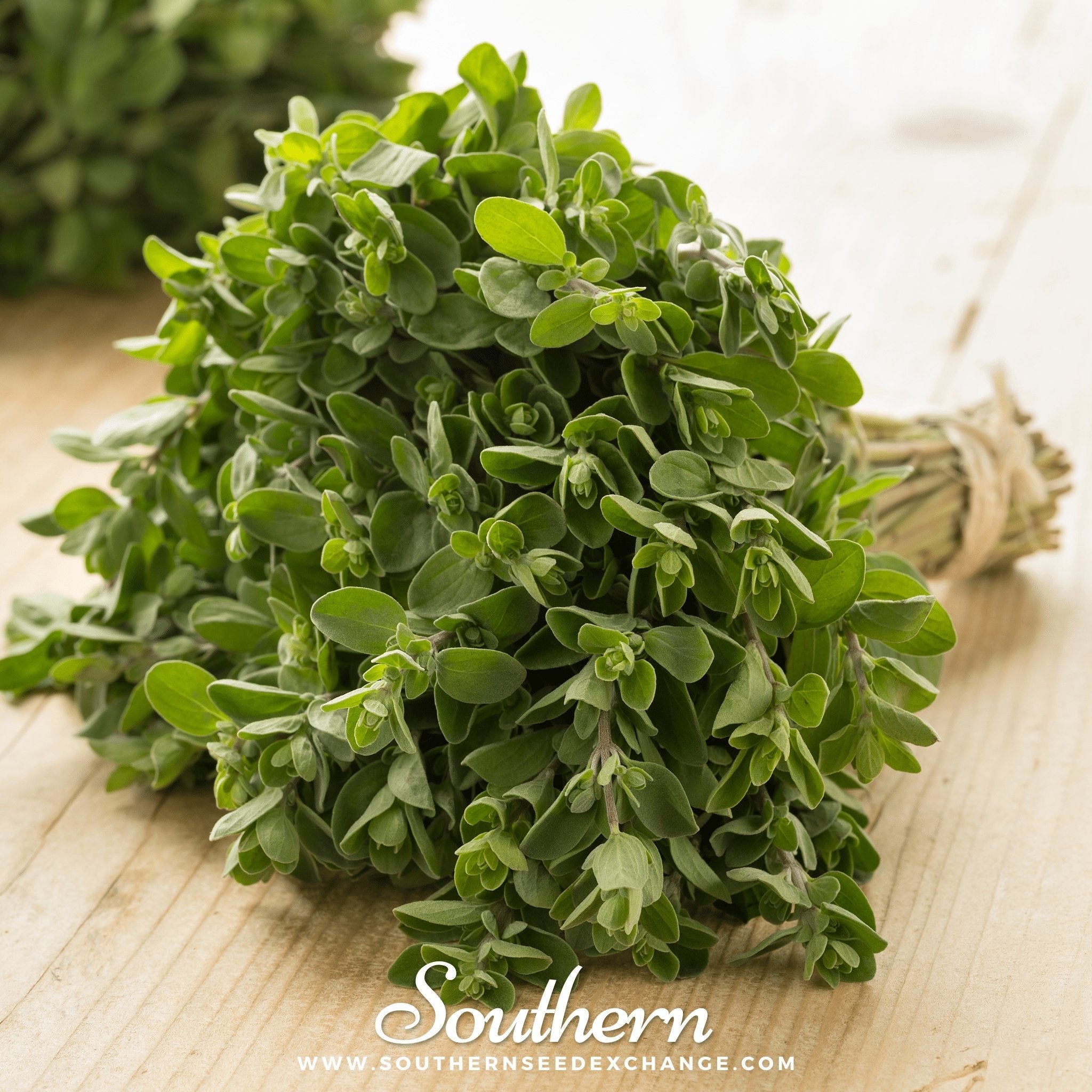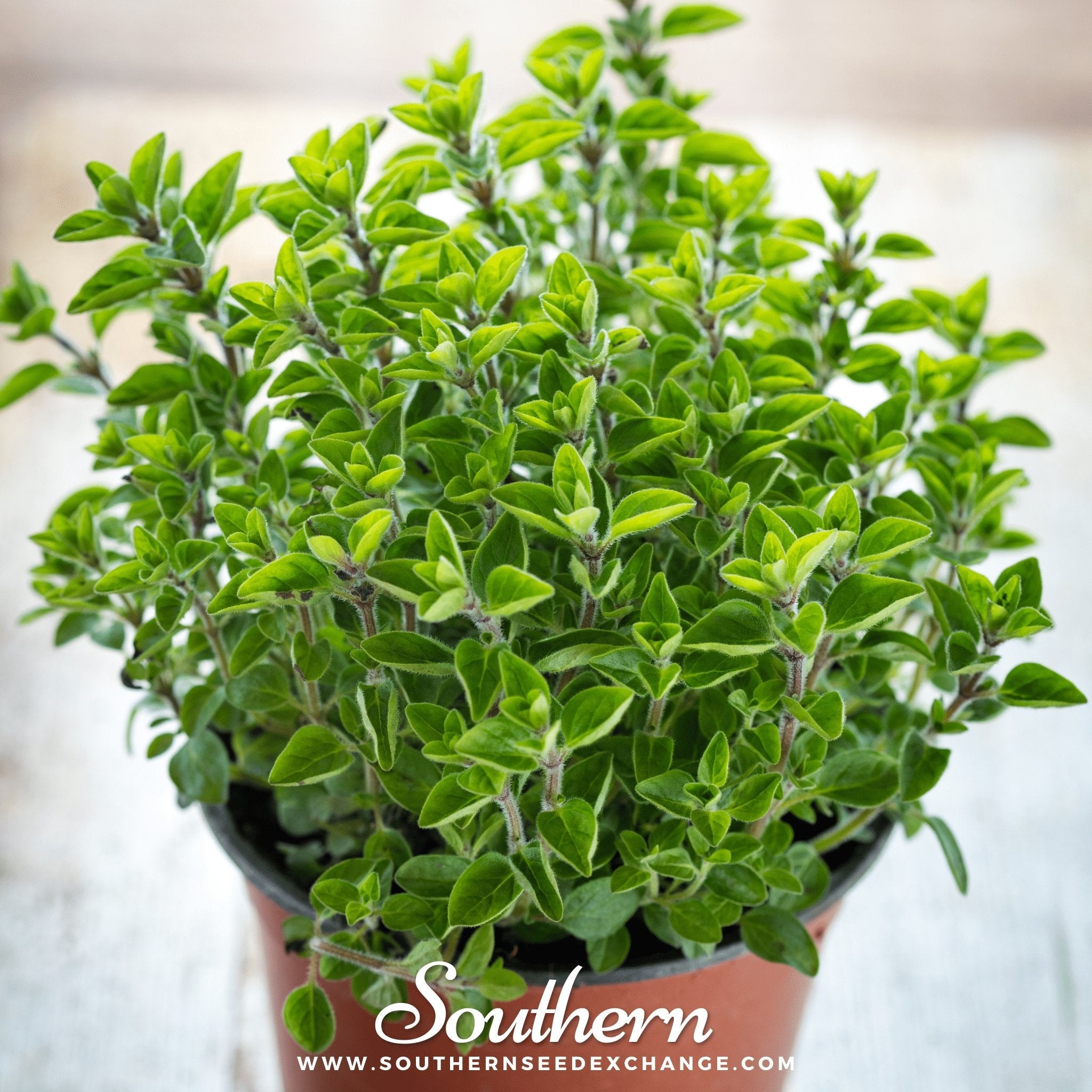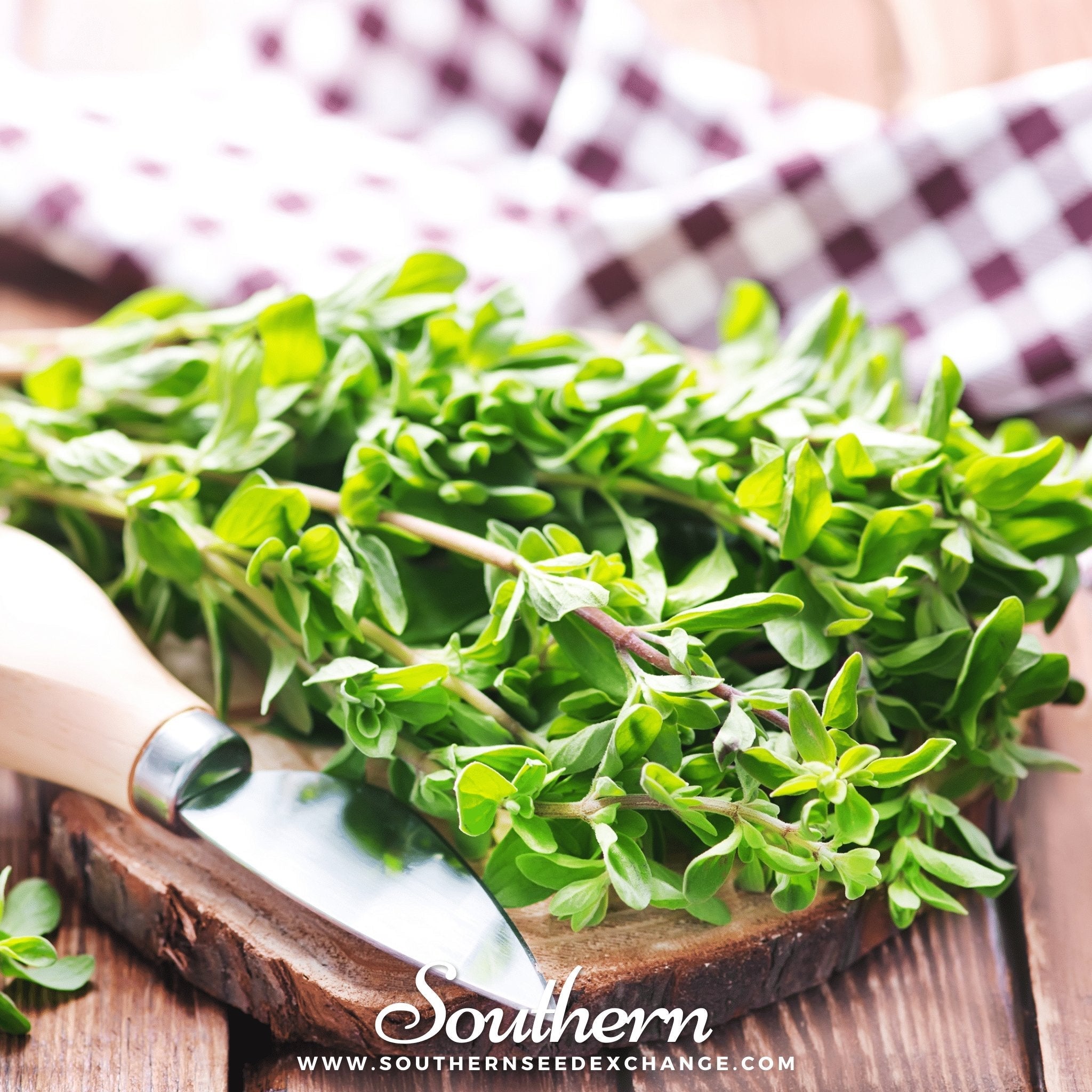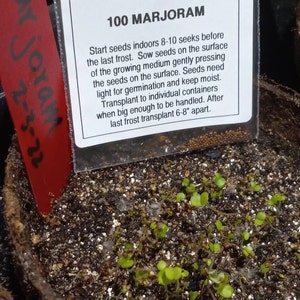Marjoram, Sweet (Origanum majorana) - 100 Seeds
•Non-GMO
•American grown seeds
•Bee Friendly
•Butterfly Friendly
Description:
One of the most popular culinary herbs, marjoram’s delicate, citrusy flavor makes it especially versatile. Marjoram is an aromatic herb in the mint (Lamiaceae) family that has been cultivated for thousands of years. In Greek mythology, marjoram was grown by the goddess Aphrodite. The fuzzy, green, oval-shape leaves grow opposite from each other, forming distinctive clusters, or knots (it’s also known as knotted marjoram). Native to the Mediterranean, North Africa, and western Asia, marjoram is often called sweet marjoram to distinguish it from oregano varieties like wild marjoram (Origanum vulgare) and pot marjoram (Origanum onites), aka Turkish oregano. The primary flavor compounds in marjoram are sabinene (fresh, woody), terpinene (citrusy), and linalool (floral). Marjoram has a milder flavor than oregano and tastes similar to thyme, but sweeter and with a stronger scent. It’s warm, slightly sharp, and a little bitter.
Culinary Uses:
Marjoram can be wrapped in cheesecloth with other herbs to create an aromatic sachet for braises and stews, or sprinkled fresh onto vegetable side dishes. Dried marjoram is a popular addition to salad dressings, meat dishes, and preserved meats such as German sausage. Used in both fresh and dried form, marjoram is subtler than its relative oregano and well suited to delicate vegetables, tomato-based dishes, such as tomato sauce and pizza, and poultry seasoning. Marjoram is an important component of spice blends.
Medicinal Uses:
It is also used as a “nerve tonic” and a “heart tonic,” and to promote better blood circulation. Marjoram oil is used for coughs, gall bladder complaints, stomach cramps and digestive disorders, dizziness, migraines, nervous headaches, nerve pain, paralysis, coughs, runny nose; and as a “water pill.”
Growing Instructions:
In short growing seasons, start marjoram inside about a month before the last frost. Sow the seeds just below the surface of the soil and keep evenly moist at 65-75°. Germination can take up to 3-4 weeks. Transplant well after the last frost since marjoram cannot tolerate cold. Place the seedlings 10-12" apart in light, well drained soil and full sun. Marjoram can also be direct sown after the last frost planting the seeds 6-8" apart and thinning the seedlings to 10-12". Marjoram also grows exceptionally well as a container plant or house plant. Marjoram is extremely easy to care for preferring slightly dry soil and strong sunlight. Harvest the leaves and sprigs when plant reaches 6" tall.
***These products have not been evaluated by the Food and Drug Administration and therefore we cannot claim to diagnose, treat, cure, or prevent any disease. All information on our site is provided for educational purposes only.
